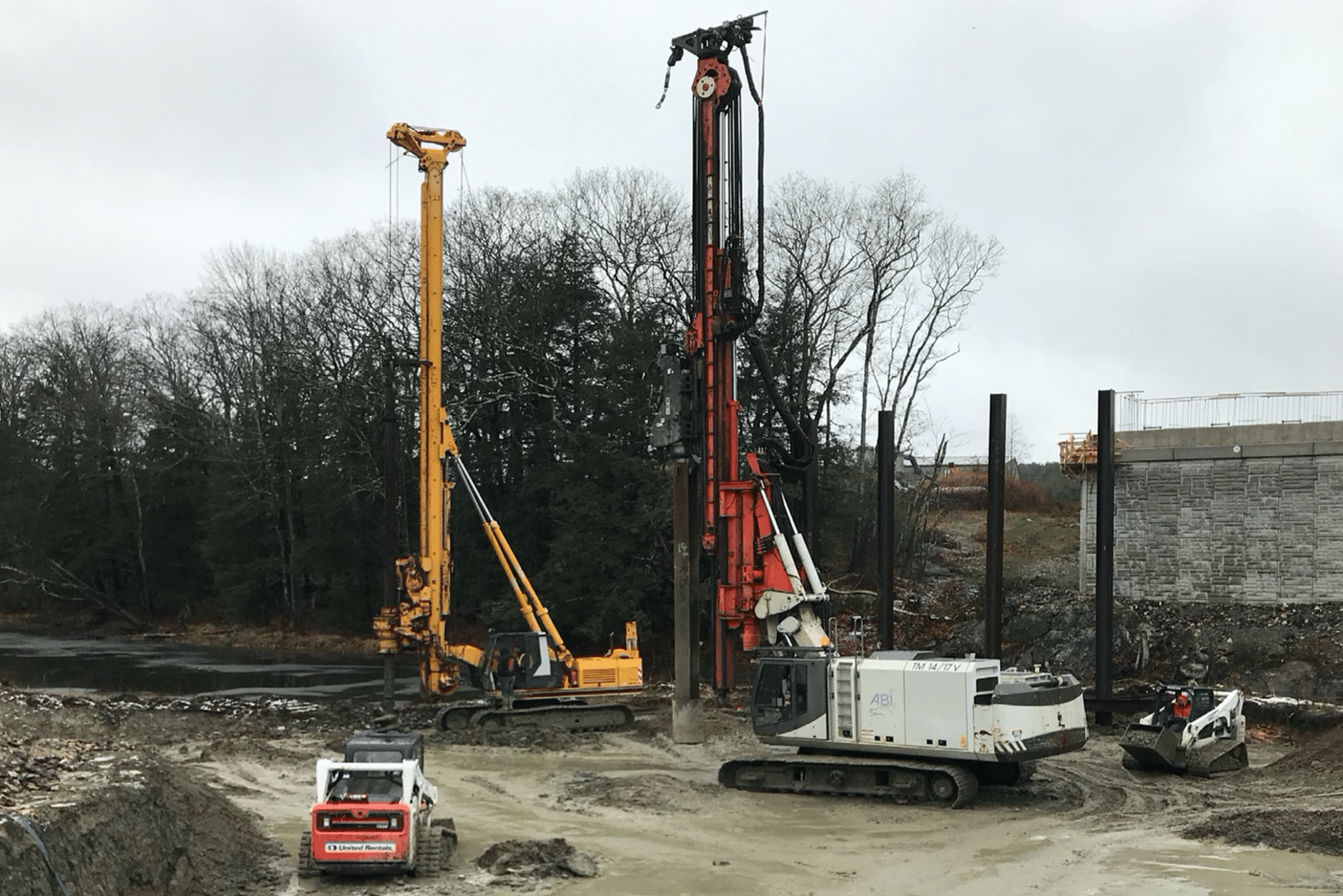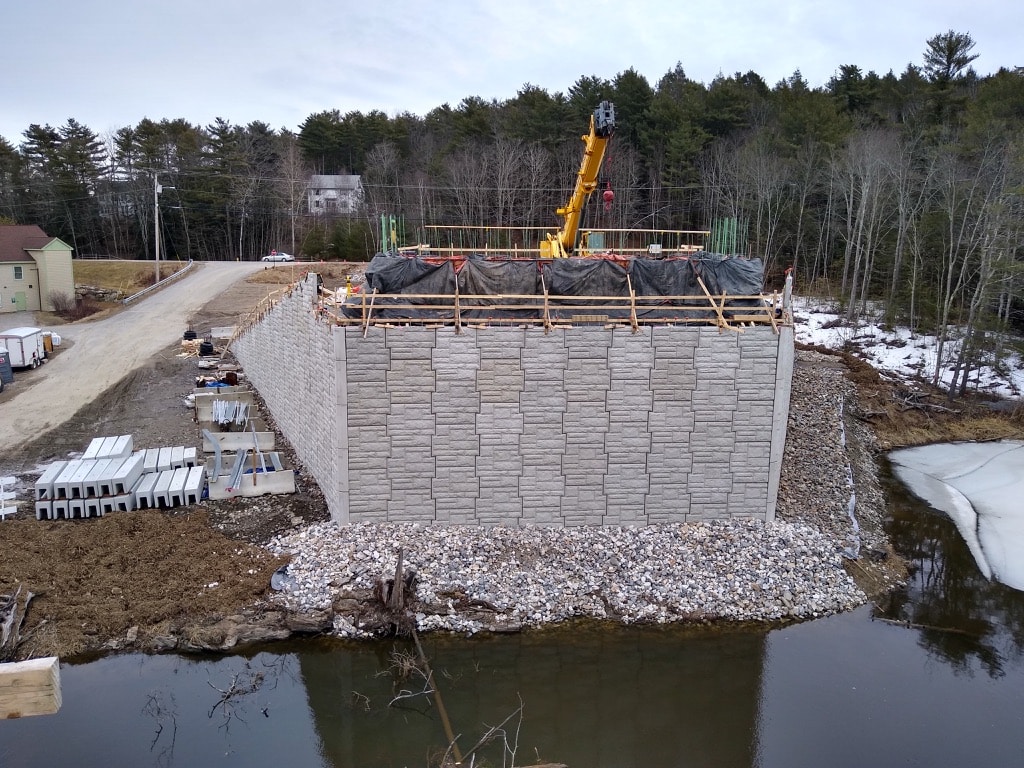Morse High School Bridge Embankment – Ground Improvement
Location: Bath, Maine
Technique: Geopier® GCC Rigid Inclusions Geopier Rammed Aggregate Pier® Systems
Introduction:
This project required embankment support, settlement control, and global stability enhancement for the eastern Anchor Road Bridge approach embankment. The 37-foot tall embankment was constructed with MSE walls and allows traffic to cross the Whiskeag Creek, in route to Morse High School in Bath, Maine.
Geotechnical Challenges:
Subsurface conditions generally consisted of up to 12 feet of Fill followed by up to 10 feet of relatively soft Silty Clay and Silty Sand overlying bedrock. The Fill and compressible Silty Clay were deemed unsuitable to support the 37-foot tall embankment and associated 5,400 psf maximum design pressure due to concerns with settlement and global stability. Removal and replacement of the unsuitable soils would have required excavations deep below the water level of the adjacent creek.
Geotechnical Design/Build Solutions:
As an alternative to the difficult removal and replacement of the unsuitable soils (adjacent to and below an existing creek), a Geopier® Rammed Aggregate Pier® (RAP) solution provided substantial cost and time savings, and eliminated the need for a premium dewatering system. Given the compressible Silty Clay layer, Cement Treated Aggregate (CTA) was used to build the bottom portion of RAP elements under the heavier portions of the MSE wall to help prevent element bulging, enhance vertical load transfer, and enhance settlement control. Several layers of Tensar® UX-1600 GeoGrid® were used between the MSE wall and the top of the RAPs to provide additional stability. Despite limited site access resulting from working immediately adjacent to the creek, over 330 piers (and over 3,000 linear feet) were installed in 8 business days.
Construction-Phase Monitoring:
A construction phase settlement monitoring program was implemented by the project Geotechnical Engineer to confirm that any residual compression of the improved soils resulting from the substantial embankment load was largely completed before the finished roadway surface was placed. Total settlement approaching 12 inches was estimated by the Geotechnical Engineer without improvement. The high stiffness of the Geopier RAP elements and the improved soil matrix significantly reduced the total embankment and retaining wall settlement. Average total settlement of about 1.25 inches was recorded after most of the embankment was placed (and settlement monitoring was ceased).

